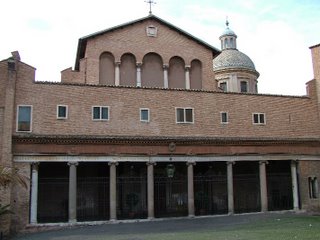
 So, today is the feast of Saint Saturninus of Carthage (not to be confused with Saint Saturninus of Toulouse, a bishop and martyr in France, whose feast is also today). Not much is known about Saint Saturninus of Carthage, except what the Roman Martyrologies say (I use the plural since there is the "old" Roman Martyrology, a new Roman Martyrology was published in 2002, and then revised in 2004).
So, today is the feast of Saint Saturninus of Carthage (not to be confused with Saint Saturninus of Toulouse, a bishop and martyr in France, whose feast is also today). Not much is known about Saint Saturninus of Carthage, except what the Roman Martyrologies say (I use the plural since there is the "old" Roman Martyrology, a new Roman Martyrology was published in 2002, and then revised in 2004).The old Roman Martyrology has this about Saint Saturninus:
Romæ, via Salaria, natális sanctórum Mártyrum Saturnini senis, et Sisinii Diáconi, sub Maximiáno Príncipe; quos, diu in cárcere maceratos, jussit Urbis Præfectus in equuleum levári et attrahi nervis, fustibus ac scorpiónibus cædi, deínde eis flammas apponi, et, depositos de equuleo, cápite truncari.
At Rome, on the Salarian Way, the birthday of the holy martyr, Saturninus, an aged man, and the deacon Sisinius, in the time of Emperor Maximian. After a long imprisonment, by order of the prefect of the city they were placed on the rack, stretched with ropes, scourged with rods and whips garnished with metal, then exposed to the flames, taken down from the rack and beheaded.- from breviary.net's Roman Maryrology pages
The new (2004) Roman Martyrology has this:
Romæ in cœmetério Trasónis via Salária Nova, sancti Saturníni Carthaginénsis, mártyris, qui, ut sanctus Dámasus papa refert, sub Décio imperatóre pro Christo in pátria in ecúleo impósitus est et Romam extórris missus, ubi, áliis atrócibus torméntis superátis, Gratiánum tyránnum ad fidem convértit et cápite obtruncáto corónam martýrii adéptus est.(My rough translation)
At Rome, in the cemetary of Trasonis on the New Via Salaria, Saint Saturninus of Carthage, martyr, who, Pope Saint Damasus relates, that under the Emperor Decius, in his homeland he [St. Saturninus] was placed on the rack for Christ, and sent into exile in Rome, where, having overcome other severe tortures, converted the tyrant Gratianus to the faith, and [St. Saturninus] being beheaded obtained the crown of martyrdom.I'm not sure what happened to St. Saturninus' deacon companion Sisinius in the new Martyrology. I often worry that some parts of legends are automatically thrown out if they can't be proven, rather than keeping them until the can be proven false. That is often the case in the rather snotty comments in the Thurston & Atwater edition of Butler's Lives of the Saints.
Still, the fact of the matter is that Saint Saturninus was martyred in Rome and his remains are at a side altar at the Basilica of Saints John and Paul (the ones menioned in the Roman Canon). So, while visiting the Basilica, I developed a devotion to this martyr of old age.
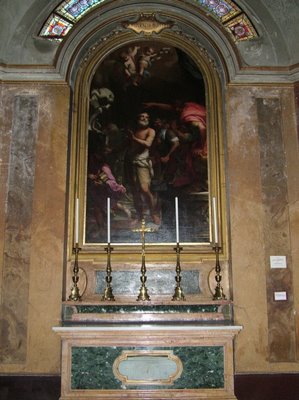 The sarcophagus in the altar used to have most of his relics, but the sacristan at the Basilica told me that a new parish was erected in Rome under his patronage and some of the remains were given to that parish.
The sarcophagus in the altar used to have most of his relics, but the sacristan at the Basilica told me that a new parish was erected in Rome under his patronage and some of the remains were given to that parish.But I do love the painting above the altar.
 This Basilica has many great paintings and the remains of several saints:
This Basilica has many great paintings and the remains of several saints: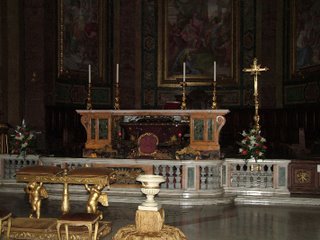
Saints John and Paul
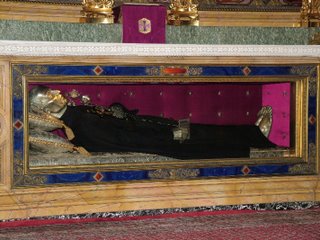
Saint Paul of the Cross

Saint Saturninus
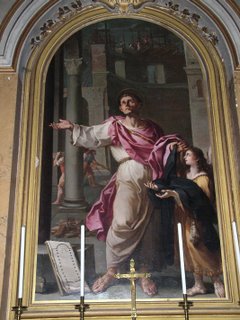
Saint Pammachius (the one who built the Basilica and a friend of Saint Jerome)

and the Martyrs of Scillium.
The Basilica is also very popular for weddings. It is near Saint Gregory the Great's church:
 which is catecorner from the Circus Maximus:
which is catecorner from the Circus Maximus: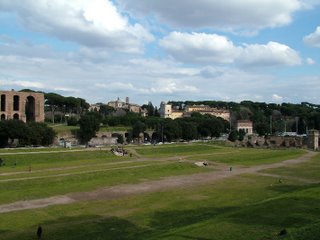
(Circus Maximus in the foreground, Church of Saint Gregory the Great to the right of the center of the picture, and Basilica of Saints John and Paul just to the left of the center of the pic.)
The Basilica of Saints John and Paul is definitely worth a visit if you are in Rome.
(And as always, you can click any of the pictures above to get a better view of them)
RS

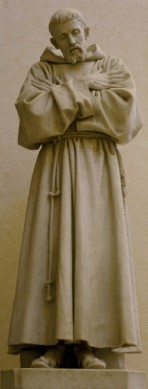




2 comments:
A priest who lived nearby the basilica of SS John and Paul told me that the chandeliers came from New York, following a redecoration of the Waldorf Astoria Hotel.
Thanks for the photos of tombs and paintings. When I visited the basilica, there was a wedding in progress, so I didn't get to see much detail.
That's interesting because I believe that the prelate over that church is the Cardinal Archbishop of New York.
Post a Comment